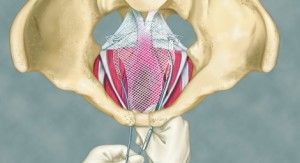“I really want a home birth but…” How doulas and childbirth educators can help expectant parents explore the home birth option.
By Monica Basile, CPM
How many times as a doula or childbirth educator have you heard someone say, “I really want a home birth, but…?” Usually this is followed by a list of perceived barriers to home birth or misconceptions about home birth, rather than personal convictions, structural barriers, or health concerns that might make hospital birth preferable or necessary. When a woman says to me, “I really want a home birth but…” what she is usually communicating is that she has an active desire for home birth but does not know how to realize that desire, or has not explored it fully enough to feel confident in her decision about her birth place.
As a home birth parent myself, and as someone who has been teaching childbirth classes and attending births for 16 years, it’s taken me a while to discern how to best respond to clients when they say this. Years ago, I would simply let it go. I’d be thinking to myself, “this person needs better information,” but because I didn’t want to be perceived as trying to sway anyone’s birth decisions, I’d respond by saying things like, “it sounds like you’ve thought about your choices and that the hospital is the right place for you.” What I now realize is that this expression can be an important invitation to us to share information and engage parents in a process of self-discovery to help them clarify their desires and options.
It’s no wonder that many people don’t know how to pursue home birth. We live in the midst of a culture of birth fear, which spreads mostly misinformation and misrepresentations of birth, especially home birth. Depending on where you live, home birth midwives may not be able to practice legally, and may therefore be extremely hard to locate or financially inaccessible. Friends and family members may be skeptical or unsupportive, and your client might not know anyone who has had a home birth. Although many women feel intuitively drawn to home birth, it can be hard to imagine the practicalities of making such a countercultural decision.
Helping a woman to conceive of ways to manifest her deepest wishes for birth is an important task - one that can inspire a lifetime of empowered decision-making. I encourage all doulas and childbirth educators to not shy away from these conversations, but to undertake them in a compassionate, thoughtful, and nonjudgmental way, without attachment to the ultimate decision. I believe strongly that each person has the right and the ability to decide what kind of birth is most appropriate for them, and that everyone deserves access to information with which to evaluate the choices available. In this spirit, I offer some strategies for sharing information and drawing out clarity with those considering home birth
Address Common Concerns.
First of all, it can be useful to explore the “but” in the statement “I would like to have a homebirth but...” Often, these “buts” are simply misapprehensions about home birth that come from either the imagination or the media. (For example, “I want to have a home birth but I don’t want to have to clean up all that mess.”) Here are some of the concerns I hear most often:
Mess: Birth is actually not as messy as one might think, and midwives tend to have a very efficient system down for mess prevention and cleanup. Typically, when the midwives leave the home after the birth, it’s cleaner than before they got there.
Cost: Depending on what state you’re in, and your midwife’s credentials, home birth midwives may be able to accept Medicaid and/or private insurance. If not, it never hurts to ask a midwife about payment plans, bartering, and sliding scales for students or those with low incomes. Often, the cost for a midwife’s services is less than or equivalent to insurance deductibles.
Small space: Although different midwives have different preferences, I have attended many home births in small apartments; even in boarding rooms. Even in large homes, midwives often find themselves in close quarters when women decide to give birth in the corner of a bedroom, between the bed and the wall, for instance.
Other children: Depending on the age(s) of the child(ren), and the mother’s preference, it may or may not be desirable for siblings to be present at a home birth. I recommend having someone who can be on call to take care of older siblings, either at home or away, depending on the preferences of all involved. I have never encountered a sibling who was voluntarily present at a home birth who felt traumatized by the experience. This can be an extraordinarily special way for children to bond with the new baby.
Switching care providers: If your client has an established relationship with a care provider in a hospital-based practice, it can seem difficult to end that relationship. However, this is usually a very straightforward process. There’s no point at which someone is obligated to stay with a care provider they don’t like, or who doesn’t suit their birth plans. Sometimes, people choose to continue concurrent care with the original provider after making plans to switch to a home birth midwife.
Encourage parents-to-be to interview a midwife -- or several.
Know your local midwives, and if an expectant parent is considering home birth, encourage her to contact a midwife for a consultation. This is the number one most important resource you can offer. Most people considering home birth have a long list of questions that only a prospective midwife can answer. Usually people want to know what happens in case of complications, and what reasons a hospital transport would be necessary. Rather than speculating on these answers, it’s much better to talk to a midwife about reasons and protocols for transport. (When I was pregnant, I asked my midwife about complications, to which she replied, “which complications are you most worried about?” I realized then that I didn’t really know – I was just duplicating the fears that others had voiced to me. My midwife empowered me with specific information, and I felt both comforted and capable of educating my concerned family and friends.)
Your client has nothing to lose by interviewing a midwife; a consultation does not obligate her to enter into a midwife’s care. If she decides to pursue home birth, this will put her on her path. If not, she can rest easy knowing she has investigated every option available and made a truly informed decision.
Share evidence-based information on home birth safety.
In 2005, The British Medical Journal published the largest, most well-designed study to date of out-of-hospital birth in North America. The study found that planned home births attended by Certified Professional Midwives are just as safe for low-risk women and babies as hospital birth, with many significant benefits over hospital birth in terms of lower cesarean rates and lower rates of common interventions, such as induction of labor. This study is just one in a large body of literature documenting the excellent outcomes associated with midwife-attended home births. The World Health Organization, the American Public Health Association, and the American College of Nurse Midwives all support increased access to home birth as a safe, responsible choice. A link to this study, as well as plenty of other good information, is available here: www.mothersnaturally.com
Be clear about legal status in your state.
Some people erroneously believe that home birth is illegal. This is not the case – a parent may choose to give birth wherever she wishes. There are no laws against having a home birth. Laws pertaining to home birth apply to birth attendants. In 27 states, direct-entry midwives (non-nurse midwives trained specifically in home birth, and credentialed as CPMs, or Certified Professional Midwives) are licensed, easily accessible, and accepted as part of the health care system. In the remainder of US states, licensure is not available for direct-entry midwives, and in several of these states, practicing as a midwife is illegal. This does not, however, mean that there are no midwives in states without licensure – it just means finding one to work with will be more difficult. Educate yourself and your clients about the legal status of midwifery in your state. You can find a state-by-state chart of midwifery laws here: http://mana.org/statechart.html
and find a link to your state friends of midwives organization here: www.thebigpushformidwives.org
Encourage honesty and harmony with spouses/significant others.
It’s common for a pregnant woman’s partner to feel protective, and sometimes this manifests in disagreements about birthplace. Help pregnant women to remember that they have the same ultimate desire as their partners: a healthy birth with a healthy mom and baby. I always encourage expectant couples to go together to a consultation with a midwife, so they both get a chance to voice their concerns and ask questions. This provides a good foundation for further discussion.
Encourage autonomy in relationships with parents and siblings.
Many people express extreme apprehension about a lack of support from family members. There are several potential ways of dealing with this. Protecting one’s inner peace about the choice to birth at home may mean not sharing this information with family until after the birth. For some, on the other hand, it can be very empowering to discuss their decision and share information with family members. Sometimes, inviting a family member to be present at a home birth can be an effective and mutually satisfying way of garnering support. In any case, and regardless of birthplace, becoming a parent ushers in a growth transition in which new parents differentiate from their own parents, and it can be helpful to put this in perspective.
Encourage positive community.
If a woman or couple has never met other home birth parents, it can be very isolating to choose home birth. Share information about birth circle groups, La Leche League or other breastfeeding support groups, home birth meetups, Holistic Moms Networks, childbirth classes, Babywearing groups, or other potential resources for positive community building.
First births are important.
It’s not uncommon to hear someone say, “Maybe I’ll plan a home birth next time.” This is a good opportunity to ask questions like, “How is it that you envision a future pregnancy and birth as being different from this one?” Many people have the idea that they will “know better what they’re doing” and be more self-possessed with second or subsequent births. This might a good moment to remind your client that her body already knows what to do, and that the capacity to give birth already exists within her. You may also want to help her keep the importance of the first birth in perspective: avoiding a primary cesarean has been identified as a key factor in avoiding maternal and infant morbidity associated with repeat cesareans and birth complications resulting from previous surgery. The cesarean rate for planned home births in the U.S. is roughly 4%, which stands in sharp contrast to the national cesarean rate of 32%.
Pay attention.
Sometimes, a woman will say “I really want a home birth but…” and may not actually feel at all comfortable with home birth. Instead, saying this may be a way for her to communicate her orientation toward a more holistic mindset in general. If this is the case, she will likely not engage actively with attempts to open up an in-depth discussion of home birth. Listen attentively, follow her lead, and remember, it’s up to that mother-to-be to know what’s right for her birth.
Home birth may not be the right choice.
There are several reasons that home birth may not be the right choice for your client. One woman’s perceived barrier may be a very real barrier to another woman. If home birth is ruled out for any reason, you can still provide, or refer her to, doula services to help her maintain continuity of care and preserve other birth preferences. If you don’t have access to home birth midwives in your area, as is unfortunately the case in some parts of the country, further options to explore include traveling to give birth, unassisted birth, birth centers, or hospital birth.
By sharing this information and giving our clients the opportunity to explore their thoughts, desires, hopes, and fears, we fill an important role: that of taking women’s desires for birth seriously. This is an invaluable service, regardless of the decisions our clients ultimately make about where to give birth.
--
Monica Basile is a BirthWorks Certified Childbirth Educator, DONA Certified Doula, and Certified Professional Midwife. She is the mother of a 15-year-old son born at home, and is a co-founder and member of Friends of Iowa Midwives. She holds a PhD in Gender, Women’s, and Sexuality Studies from the University of Iowa.









